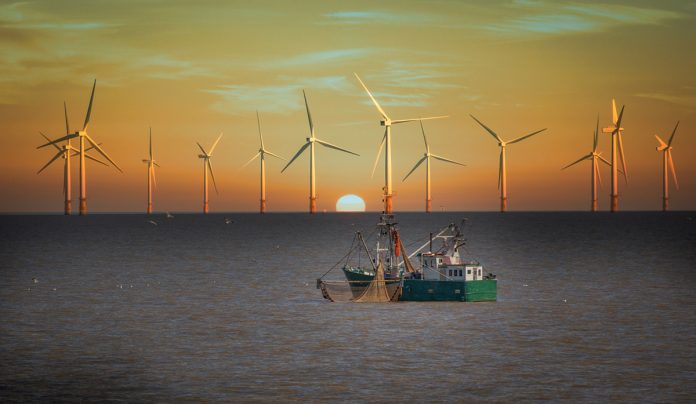Prof Dr Daniela Jacob at Climate Service Centre Germany (GERICS), explains here how climate services safeguard the development of resilient and sustainable coastal systems
Coastal cities and settlements are a new focus area at Climate Service Center Germany (GERICS). Coasts, the meeting point of ocean and land, rich in natural resources, are critically important for economies, livelihoods and the well-being of (coastal) communities. According to forecasts, up to 70% of the world’s population will live on coasts in the next 50-100 years. Currently, 15 of the 20 megacities, i.e. cities with a population of more than 10 million inhabitants, are located on the coast. Coasts provide resources that drive economic activities such as tourism, the transport of goods and food production.
How does the activity of the coast impact the population?
Coastal fishing and marine aquaculture are the main sources of protein in some areas of the world, contributing to the well-being of more than three billion people. The increasing concentration of economic activities and growing urbanisation of coasts often result in conflicting or competing use of limited spaces. In addition, the impacts of global change, climate change are also affecting the coasts. Next to rising temperatures and changing patterns in extreme events, sea-level rise resulting, for example, in salt-water intrusion of groundwater resources, or higher storm surges will have additional impacts on coastal communities. To maintain and develop sustainable, habitable, and productive coastal areas, it is important to understand the long-term impact of global change. This requires innovative solutions for the development, production and delivery of climate services on scenarios for projected climate change.
When developing such climate services, especially for the coast, the relationships between the many and varied sea- and land-based sectors of society, i.e. socio-economy, finances, law, transport, the ecosystem and its components, such as water regulation, and the many sea- and land-based uses of the coast, for example, tourism, recreation and resource harvesting must be considered. Analysis of future states of the coast must, therefore, necessarily be integrative and systemic.
The sustainable development of the coast
To understand and support the sustainable development of local coastal systems, where the actions for adaptation are needed, GERICS are undertaking several key research and development activities. The first is to generate and provide local climate information with a high temporal and spatial resolution. The regional climate model REMO is currently under development and will provide a 2×2 km ground resolution (compared to the former 12×12 km resolution). This is particularly important for climate change analysis at coasts and in the cities, as the orography and topography are much more fragmented than, for example, in rural areas with greater consistency in land-use, for example, agricultural, forests.
This higher resolution of REMO also allows for the integration of urban climate models, for example, PALM-4U, which can then resolve climate change variable to 1m. Also, to increase the spatial and temporal resolution of the regional climate model REMO, an improved land-atmosphere coupling will help to carry out more precise simulations and thus provide improved climate change information to support the economic and social development of coastal areas.
In addition to these improvements in the provision of climate change information, knowledge of the human system is also extremely important. The needs of communities in different places and during different times are often unique and very dynamic. As a result, the engagement with stakeholders and the users of climate services are never finished, and always subject to new conditions brought on by changing socio-economic conditions, perceptions and world views. This understanding extends beyond co-development of Climate Services and forms the basis for another research field at GERICS. The development of a second generation of climate services focuses on the innovation of the “last mile” of climate services. This includes a continuous effort to produce new tools and methods with which to innovate the climate service co-development process through a transdisciplinary approach. These research efforts ensure that climate services are appropriately customised for specific users and fit-for-purpose.
How can coastal planning be done better?
To develop climate services to support urban planning and management of coastal areas, a better understanding of the human system and its multi-level governance is needed. For this purpose, a suite of comprehensive dynamic socio-economic models such as system dynamics or agent-based modelling approaches are being developed and used at GERICS. These are needed to adequately represent the complexity of urban socio-natural systems on the coast. These approaches also involve relevant local stakeholders and their expertise, as a source of local knowledge. These modelling approaches allow identifying leverage points in complex coastal systems where a small change may influence the entire system.
Developing adaptation measures or pathways for societal transformation at a regional or local level – i.e. modelling the regional and local climate and the regional and local human system – need to be integrated into what is known at GERICS as a regional integrated modelling framework.
The framework assists in identifying relevant model components and their interactions, analysing climate change and cross-sectoral interactions, indicating limits, uncertainties, trade-offs and thresholds and supporting decision making for the sustainable management of a specific region.
Given the global importance and priority of the UN SDGs and the Decade for Ocean Research, GERICS are developing several new activities to support the sustainable development of coastal systems. At GERICS, we are well-suited to tackle these tasks thanks to its interdisciplinary team and its expertise in transdisciplinary approaches.
Please note: This is a commercial profile











